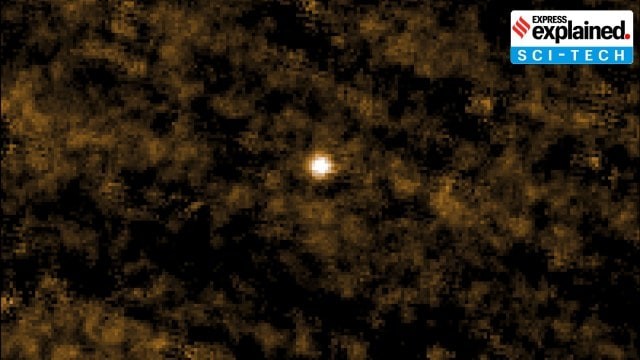





Source: downtoearth
Disclaimer: Copyright infringement not intended.
Context
Details
Key points
Implications
Omega Centauri
Characteristics
Black Holes
Types of Black Holes
Properties and Structure
Detection
Significant Discoveries
Implications
|
Hubble Space Telescope
Key Features
Instruments Hubble's capabilities have been enhanced through five astronaut servicing missions, which involved the replacement and upgrading of scientific instruments. Key instruments include:
Scientific Contributions
|
Summary of important astronomical telescopes
|
Telescope |
Type |
Primary Mirror Size |
Location |
Purpose |
|
Hubble Space Telescope |
Space |
2.4 meters |
Low Earth Orbit |
General-purpose observatory; deep space observations. |
|
James Webb Space Telescope (JWST) |
Space |
6.5 meters |
Lagrange Point L2 |
Infrared astronomy; studying the early universe, star formation, and exoplanets. |
|
Keck I & II |
Optical |
2 x 10 meters |
Mauna Kea, Hawaii |
Visible and infrared astronomy; high-resolution imaging. |
|
Very Large Telescope (VLT) |
Optical |
4 x 8.2 meters |
Paranal Observatory, Chile |
High-resolution imaging, spectroscopy. |
|
Large Synoptic Survey Telescope (LSST) |
Optical |
8.4 meters |
Cerro Pachón, Chile |
Wide-field survey of the sky. |
|
Subaru Telescope |
Optical |
8.2 meters |
Mauna Kea, Hawaii |
Wide-field imaging and spectroscopy. |
|
Gran Telescopio Canarias (GTC) |
Optical |
10.4 meters |
La Palma, Spain |
Deep space observations, spectroscopy. |
|
Atacama Large Millimeter/submillimeter Array (ALMA) |
Radio |
66 antennas (up to 16 km apart) |
Atacama Desert, Chile |
Studying the cold universe; star formation, molecular clouds. |
|
Very Large Array (VLA) |
Radio |
27 x 25 meters |
Socorro, New Mexico, USA |
Radio astronomy; studying galaxies, black holes, and cosmic jets. |
|
Arecibo Observatory |
Radio |
305 meters (collapsed in 2020) |
Arecibo, Puerto Rico |
Radio astronomy, radar observations of planets. |
|
Green Bank Telescope |
Radio |
100 meters |
Green Bank, West Virginia, USA |
Radio astronomy; studying pulsars, galaxies. |
|
FAST (Five-hundred-meter Aperture Spherical Telescope) |
Radio |
500 meters |
Guizhou, China |
Radio astronomy; searching for extraterrestrial life, studying cosmic phenomena. |
|
Chandra X-ray Observatory |
Space |
N/A |
Space (Earth orbit) |
X-ray astronomy; studying high-energy regions like black holes and supernova remnants. |
|
Spitzer Space Telescope |
Space |
0.85 meters |
Space (Earth-trailing orbit) |
Infrared astronomy; studying exoplanets, star formation, and distant galaxies. |
|
Fermi Gamma-ray Space Telescope |
Space |
N/A |
Space (Earth orbit) |
Gamma-ray astronomy; studying black holes, neutron stars, and gamma-ray bursts. |
|
European Extremely Large Telescope (E-ELT) |
Optical |
39 meters |
Cerro Armazones, Chile |
High-resolution imaging and spectroscopy; studying exoplanets, black holes, and the early universe. |
|
Square Kilometre Array (SKA) |
Radio |
Thousands of antennas |
Australia, South Africa |
Radio astronomy; studying the early universe, dark matter, and cosmic magnetism. |
|
Thirty Meter Telescope (TMT) |
Optical |
30 meters |
Mauna Kea, Hawaii |
High-resolution imaging and spectroscopy; studying the early universe, exoplanets. |
|
LIGO (Laser Interferometer Gravitational-Wave Observatory) |
Gravitational |
4 km arms |
Hanford, WA and Livingston, LA, USA |
Detecting gravitational waves; studying black hole mergers, neutron stars. |
|
Event Horizon Telescope (EHT) |
Radio |
Network of telescopes |
Global |
Imaging black holes; produced the first image of a black hole. |
Sources:
|
PRACTICE QUESTION Q: Consider the following statements regarding Black Holes:
Which of the statements given above is/are correct? a) 1 and 2 only Answer: a) |





© 2025 iasgyan. All right reserved